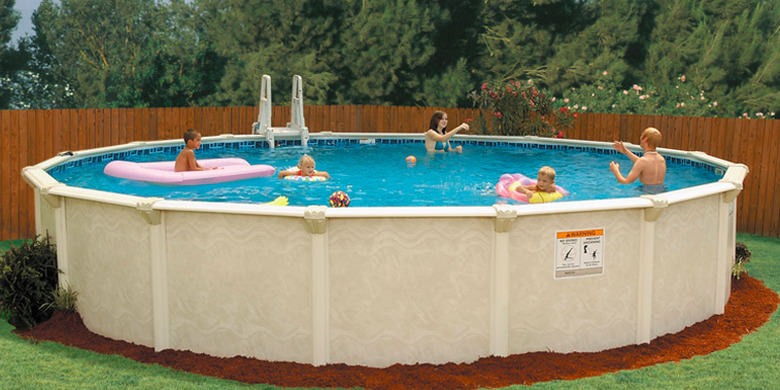Above-Ground Pool Regulations
To ensure safety, your community has a variety of regulations for the installation of above-ground swimming pools. Many of these are similar to the regulations for in-ground pools. While these regulations are similar from state to state and are often based on federal codes, such as the Uniform Building Code and National Electrical Code, your state and community have the right to alter these codes, with either more rigid or more lenient regulations. Always check with your local building inspections office to learn the requirements for above-ground pools in your community. Local regulations always supersede any national code requirements.
The following regulations are common ones found in many, but not all, communities.
Pool Location
Pool Location
- Above-ground pools are not allowed in the front yard. Some communities may also forbid swimming pools in side yards.
- Local set-back rules must be followed. In many communities, above-ground pools must be at least 10 feet from buildings, fences and property lines.
- Pools cannot be placed over any underground sewer, water or utility lines. This ensures access to these utilities if service work is required.
Pool Construction
Pool Construction
- Installation contractors must file permit applications with the community zoning office. Pools installed by homeowners also require permit applications.
- Permits should be visibly displayed on the work site during installation.
- Installation of pump/filter equipment usually requires a separate permit.
Fencing and Barriers
Fencing and Barriers
Requirements for fencing on or around above-ground pools varies considerably from community to community.
- Usually, barrier fences are required to prevent people from accessing your pool without supervision. Some, but not all, communities, consider the vertical walls of the above-ground pool to be a sufficient barrier.
- Where fencing is required, the standard minimum height is 6 feet, although in some communities it may be as low as 4 feet.
- If fencing is required, gaps between vertical pickets and between the bottom rail and the ground may be no more than 4 inches wide.
- Where fencing is required, gates must be self-latching, and must latch or lock when the pool is unsupervised.
- If a fence is not required, then the ladder of the above-ground pool must be removable or designed in such a manner that access to the pool can be restricted by locking or covering the ladder.
Entrapment/Filtration
Entrapment/Filtration
All above-ground pools must also contain entrapment or suction outlets that produce circulation in the pool and circulate water through a filtration system to help keep the water clean. These pump systems must have covers that conform to standard suction fittings, a properly sized drain gate (usually 12 by 12 inches) or an approved channel drain system.
Electrical Requirements
Electrical Requirements
Because of the inherent danger of mixing electricity and water, special safety considerations are necessary when it comes to electrical service.
- Electrical installations of pumps and filters require separate permit applications and relevant inspections.
- Overhead power lines should be at least 22.5 feet above the surface of the water.
- Overhead telephone and cable TV lines should be at least 10 feet above the water surface.
- Electrical outlets should be at least 20 feet away from the pool if they are not GFCI protected. If they are GFCI protected, they may be as close as 6 feet away.
Inspections
Inspections
Inspections of the pool installation and wiring installation are required; there may be several inspections needed at different points of the installation. A representative of the local zoning office will visit your site to make sure the installation and wiring hookups are safe and comply with code requirements.
